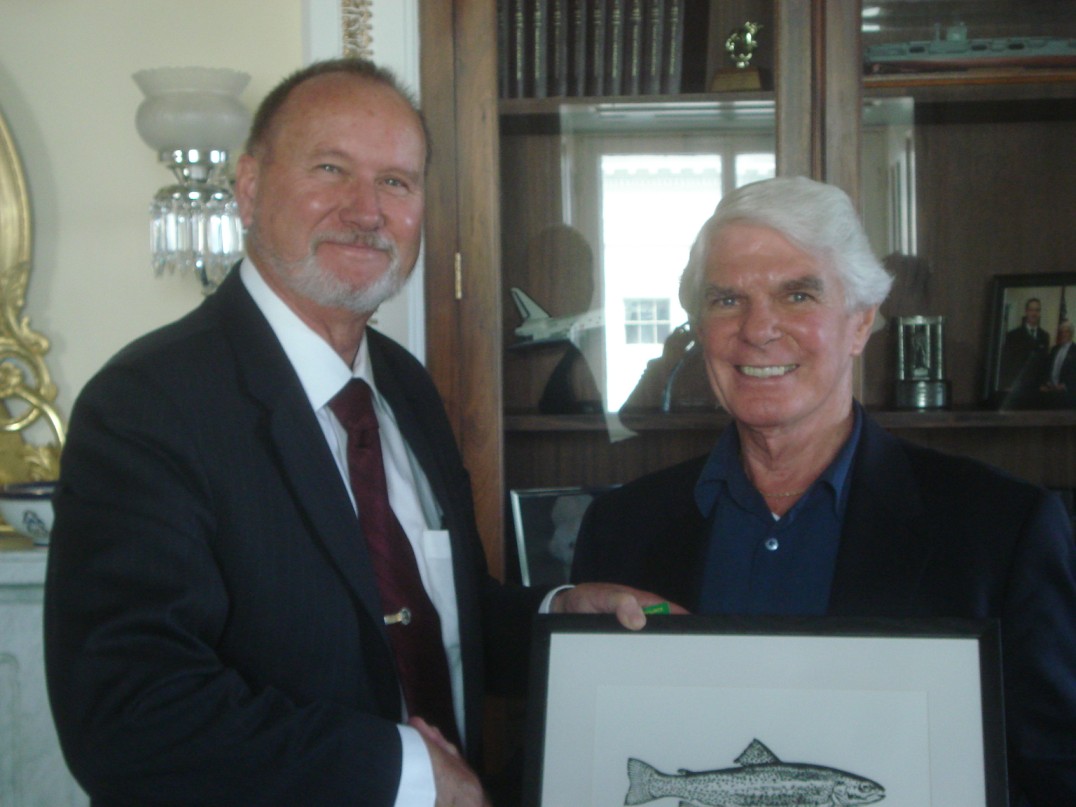|
PROTECTING OUR MOST VALUED STREAMS AND WILDERNESS AREAS By Bill Reeves, Conservation Chairman Some may doubt that anything good ever happens in Washington DC, but I just returned recently from our na-tion’s capital and can attest that our democracy survives. While there, I joined about a 120 environmentalists from all over the country, meeting, learning and sharing with fellow activists, and most importantly talking with our representatives in Congress about protecting our most valued streams and wilderness areas. I met with Senator Feinstein in person and told her how important Deep Creek is, and why it should be included in her Desert bill. I meet with staff from Senator Boxer, Rep. Becerra’s of-fices, pointing out our work with Rep. Dreier on protect-ing the San Gabriel River and mentioned Deep Creek in Senator Feinstein’s bill.
|
I was also expecting to make my own way to a five minute meeting in person with Rep. Lewis in his office. However, to my surprise, his staff member took us through extra security and we walked underground from his office to the Capital Building, where five minutes turned into about forty-five minutes as we talked about Deep Creek and the old days. I presented Rep. Lewis with an original wood cut print titled “Deep Creek Rainbow Trout” by Deep Creek Fly Fishers member, Curtis Bayer. Later I also met with Representatives Napolitano, Ber-man, Schiff and Drier.Congress returns back to a lame duck session in late November of this year. Please join me in urging our cur-rent legislators to use the rest of this Congress to make a lasting impression on our most treasured streams and wild lands. |
Bad news for 2009 Salmon Season
Bad news for 2009 Salmon Season
Most of the fall run salmon return data is now available and the news is not good. It appears there can be no salmon fishing season in 2009. In 2007, 90,000 fall run fish returned to the Central Valley system to spawn. The fishing season was closed because a minimum of 121,000 returns are needed for the species to survive long term. In 2008, the returns are estimated to be only 60,000 fish, a 23% drop from 2007 and the 2008 fishing season was completely closed. The disaster deepens. Stakeholder groups are asking for another year of trucking hatchery fish around the delta to avoid the low water and delta problems. DFG, NMFS, and The U.S. Fish and Wildlife Service will truck again in 2009 but the levels are yet to be established. Water4fish.org.
Steve Kopp
Californias Wild Steelhead
FEDERAL COURT UPHOLDS PROTECTION FOR CALIFORNIA’S WILD STEELHEAD
If you’re interested in learning more about the state of California’s native trout and salmon, their history, biology, distribution, and status, there are a couple new reports available. CalTrout commissioned Dr Peter Moyle and the team at the Center for Watershed Sciences at UC Davis to compile a report on the state of California’s 32 native salmonid species.
The full report Salmon, Steelhead, and Trout in California is the most up to date material on California salmonids. The 300+ pg document is available as a PDF file from www.caltrout.org There is also a shorter document also available there, more an executive summary of distribution, status, and risks by specie titled SOS: California’s Native Fish Crisis that probably covers most recreational fisheries interests (more maps and pictures). If you’ve ever wondered where to catch a particular trout or salmon native to California, these are the new definitive reference materials for your research.
Unfortunately the overall conclusion of the project is that many more of California’s native trout and salmon are threatened or endangered than most people realized. The documents also do a good service to explaining the risks to the long term survival of the fish, while leaving it mostly up to the reader to for their own policy decisions.
I will print up a few copies for the January meeting to include in the club library.
Steve Kopp


